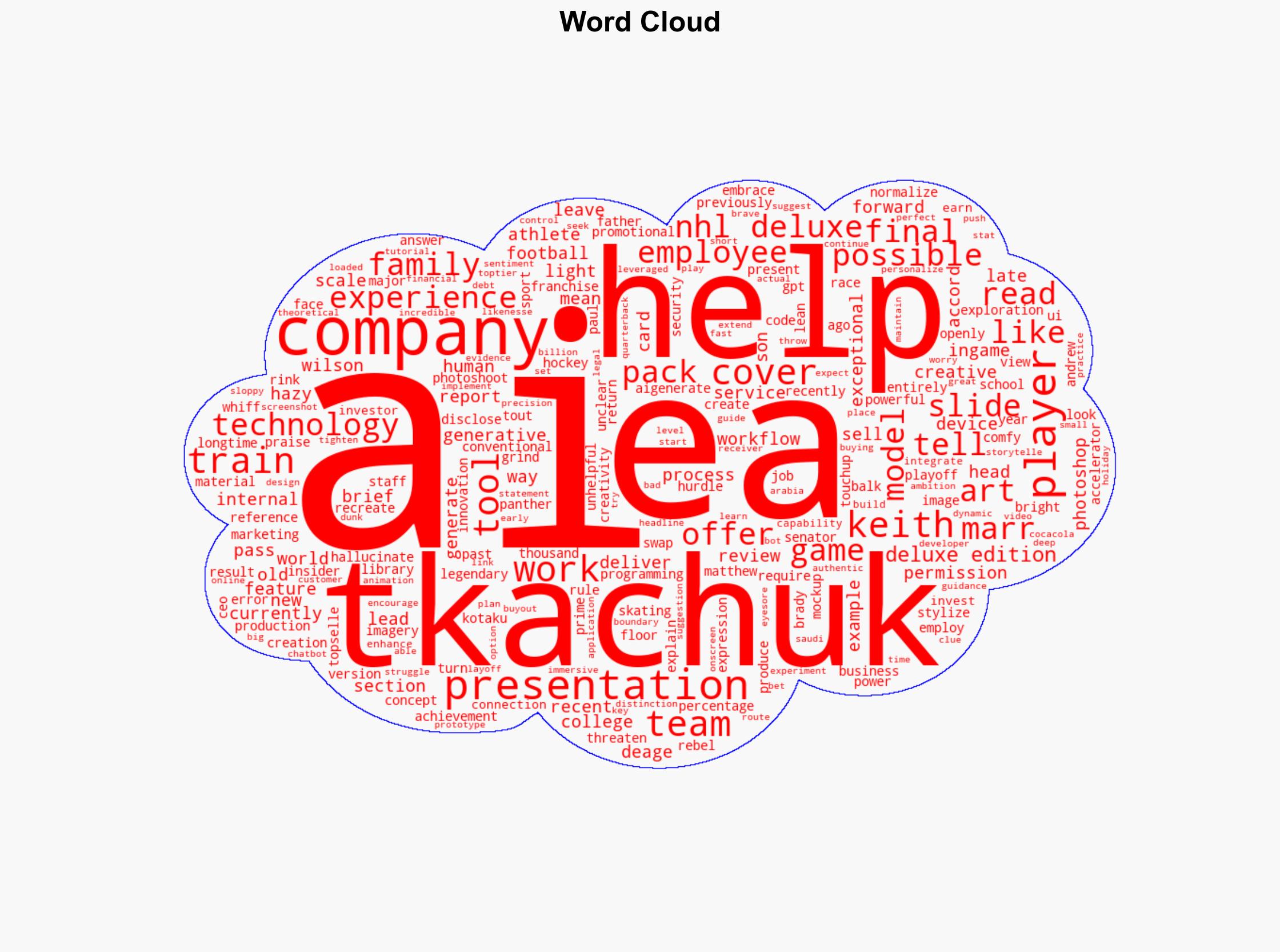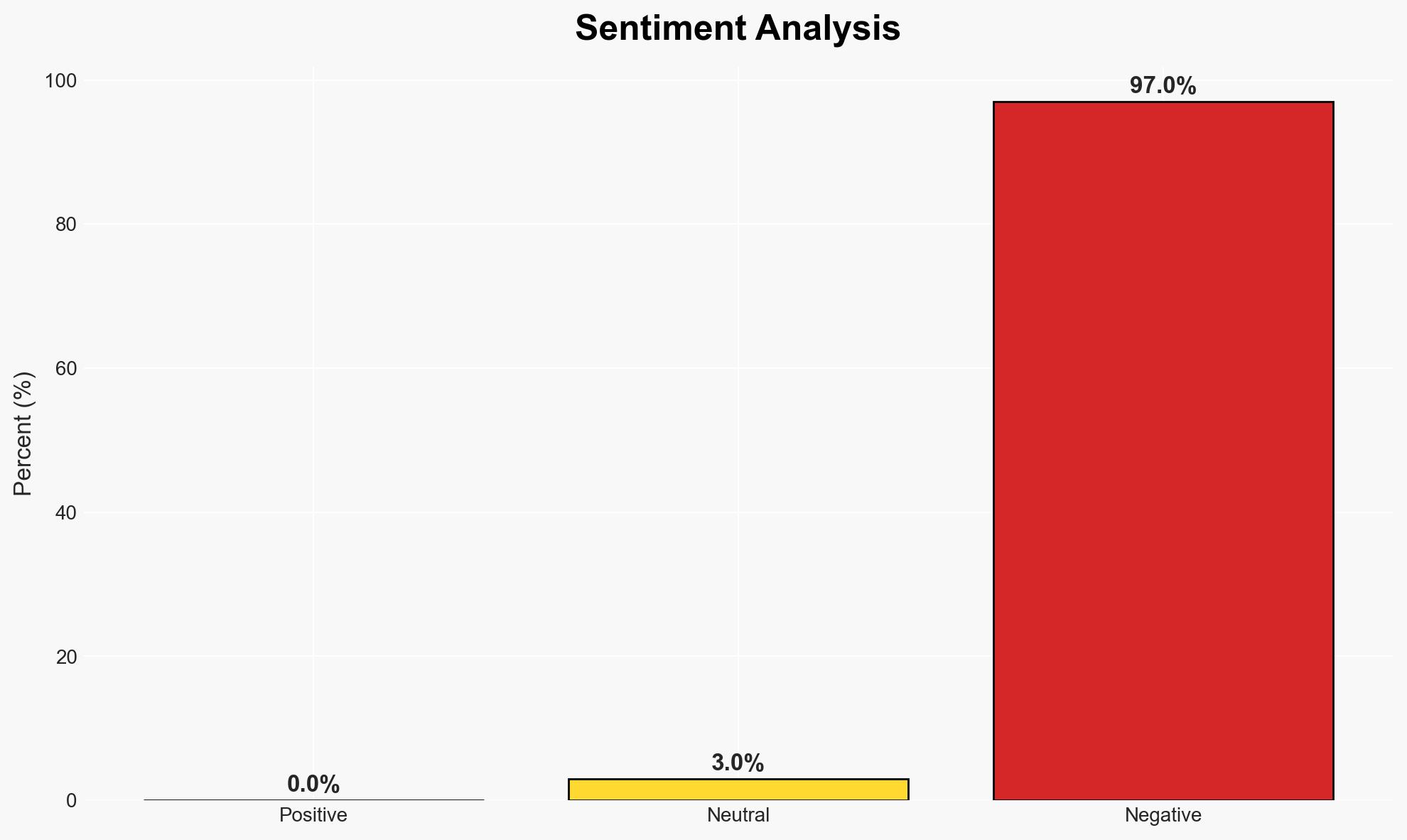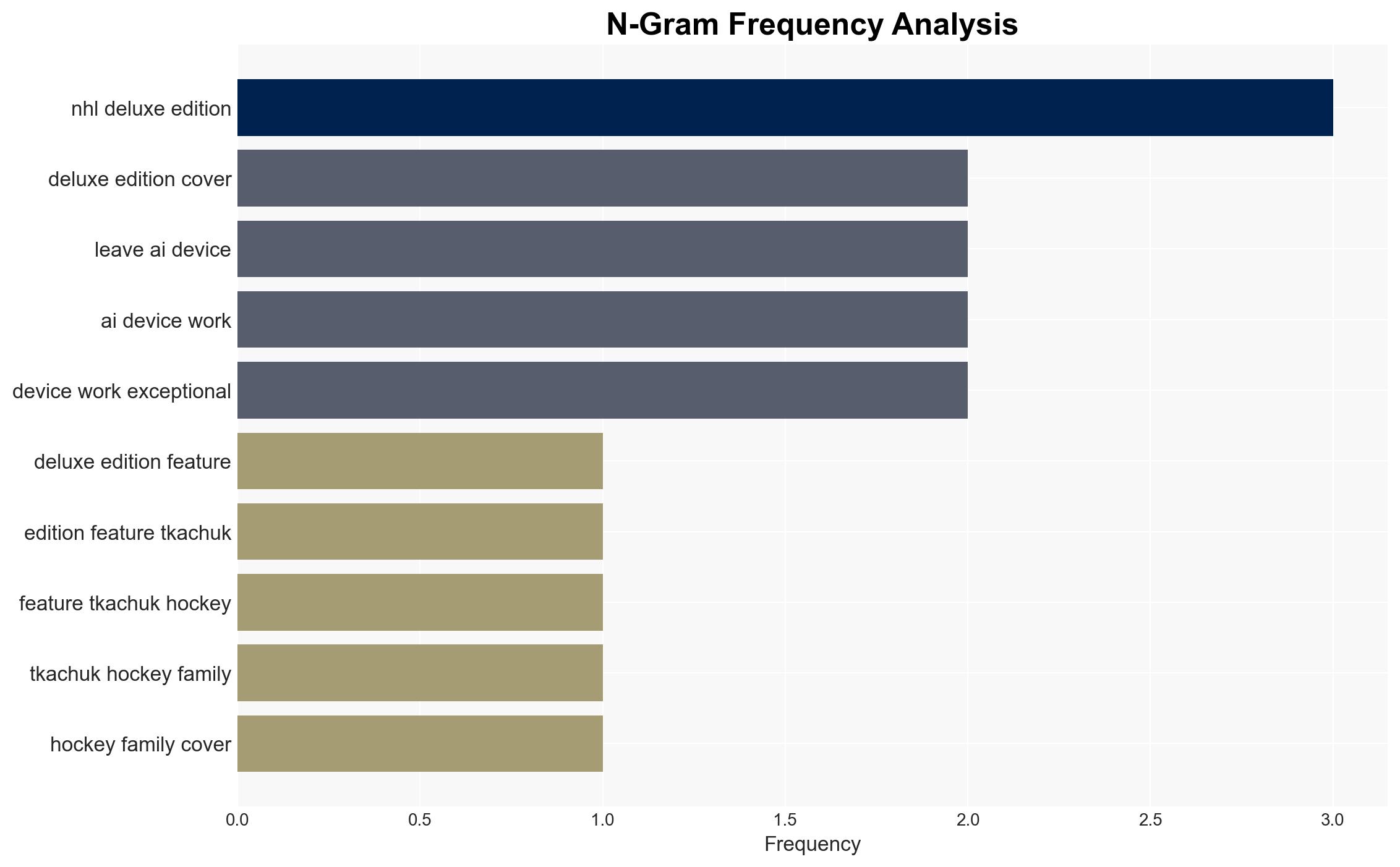EA Integrates Generative AI for NHL Deluxe Edition Cover Art Creation
Published on: 2025-11-26
AI-powered OSINT brief from verified open sources. Automated NLP signal extraction with human verification. See our Methodology and Why WorldWideWatchers.
Intelligence Report: EAs Generative AI Evangelism Now Includes Cover Art
1. BLUF (Bottom Line Up Front)
Electronic Arts (EA) is integrating generative AI into its creative processes, notably in the production of cover art for its NHL Deluxe Edition. This initiative is part of a broader strategy to leverage AI for enhancing creativity and operational efficiency. The most likely hypothesis is that EA aims to reduce production costs and increase creative output, with moderate confidence in this assessment. This development affects EA’s workforce, the gaming industry, and potentially the broader creative sector.
2. Competing Hypotheses
- Hypothesis A: EA is using generative AI primarily to enhance creative processes and reduce production costs. Supporting evidence includes EA’s internal presentations and statements from company leadership emphasizing AI’s role in creativity and efficiency. Key uncertainties include the extent of AI’s impact on job security and creative quality.
- Hypothesis B: EA’s adoption of AI is primarily a strategic move to position itself as a leader in AI-driven innovation within the gaming industry. This is supported by EA’s public statements and strategic investments in AI capabilities. Contradicting evidence includes employee concerns about job security and AI’s current limitations.
- Assessment: Hypothesis A is currently better supported due to explicit mentions of cost reduction and creative enhancement in internal documents. Indicators that could shift this judgment include significant changes in EA’s workforce dynamics or strategic pivots in AI deployment.
3. Key Assumptions and Red Flags
- Assumptions: EA’s AI tools will continue to improve in accuracy and reliability; the gaming market will remain receptive to AI-enhanced products; EA’s workforce will adapt to AI integration.
- Information Gaps: Detailed data on the financial impact of AI integration on EA’s operations; comprehensive feedback from consumers on AI-generated content.
- Bias & Deception Risks: Potential bias in internal reporting favoring AI success; risk of over-reliance on AI-generated data without adequate human oversight.
4. Implications and Strategic Risks
This development could lead to significant shifts in how creative content is produced within the gaming industry, potentially setting new standards for AI integration. Over time, this may influence broader industry practices and consumer expectations.
- Political / Geopolitical: Limited direct implications, but potential for regulatory scrutiny on AI use in creative industries.
- Security / Counter-Terrorism: Minimal direct impact, though increased AI use could raise cybersecurity concerns related to data integrity and intellectual property.
- Cyber / Information Space: Increased AI deployment may necessitate enhanced cybersecurity measures to protect AI models and outputs.
- Economic / Social: Potential job displacement within creative roles; shifts in consumer expectations regarding digital content quality and authenticity.
5. Recommendations and Outlook
- Immediate Actions (0–30 days): Monitor EA’s AI deployment strategies and workforce feedback; assess consumer reactions to AI-generated content.
- Medium-Term Posture (1–12 months): Develop partnerships with AI ethics organizations; invest in workforce retraining programs to mitigate job displacement risks.
- Scenario Outlook:
- Best Case: AI integration leads to enhanced creativity and operational efficiency without significant job losses.
- Worst Case: AI deployment results in widespread job displacement and consumer backlash against AI-generated content.
- Most Likely: Gradual integration of AI with mixed impacts on workforce and consumer acceptance, contingent on ongoing adjustments and feedback.
6. Key Individuals and Entities
- Paul Marr – EA Sports Marketing Head
- Andrew Wilson – EA CEO
- Electronic Arts (EA)
- Not clearly identifiable from open sources in this snippet.
7. Thematic Tags
Cybersecurity, This brief is tagged under: cybersecurity; AI integration; gaming industry innovation; workforce dynamics; creative content production
Structured Analytic Techniques Applied
- Adversarial Threat Simulation: Model and simulate actions of cyber adversaries to anticipate vulnerabilities and improve resilience.
- Indicators Development: Detect and monitor behavioral or technical anomalies across systems for early threat detection.
- Bayesian Scenario Modeling: Quantify uncertainty and predict cyberattack pathways using probabilistic inference.
Explore more:
Cybersecurity Briefs ·
Daily Summary ·
Support us





